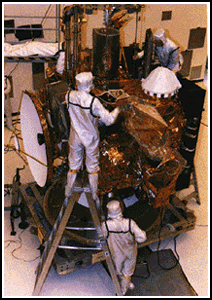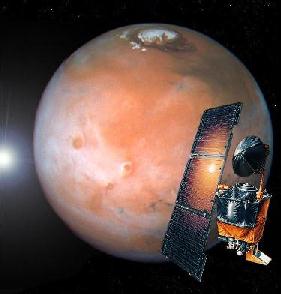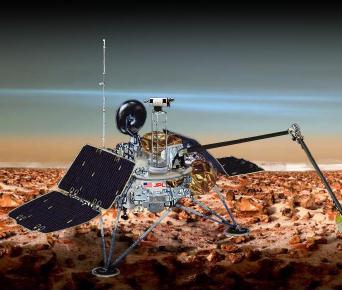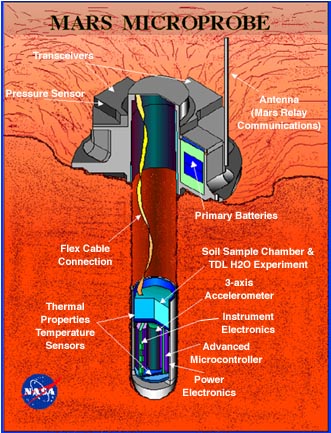Mars: A Century of Exploration
Some Problems
 The first U.S. spacecraft to visit Mars following the Viking missions, was
planned to be the Mars Observer. It was to map Mars and monitor its
atmosphere, to better help us understand Martian geology and climatology.
Unfortunately, 3 days before entering orbit around Mars, the spacecraft
fell silent. It is suspected that a mechanical failure with a rocket
caused the Mars Observer to explode.
The first U.S. spacecraft to visit Mars following the Viking missions, was
planned to be the Mars Observer. It was to map Mars and monitor its
atmosphere, to better help us understand Martian geology and climatology.
Unfortunately, 3 days before entering orbit around Mars, the spacecraft
fell silent. It is suspected that a mechanical failure with a rocket
caused the Mars Observer to explode.
 The Mars Climate Orbiter was planned to arrive at Mars in September 1999.
One of it's main missions was to study the distribution of water on Mars.
An infrared radiometer would have scanned
the atmosphere to profile its temperature, dust and water-vapor content,
and clouds. It would have taken color pictures with a resolution of 40
meters and produced daily global images of the Martian atmosphere.
Unfortunately, a units conversion error resulted in the probes' loss (it
probably was crippled by dipping too low into the thin Martian atmosphere).
The Mars Climate Orbiter was planned to arrive at Mars in September 1999.
One of it's main missions was to study the distribution of water on Mars.
An infrared radiometer would have scanned
the atmosphere to profile its temperature, dust and water-vapor content,
and clouds. It would have taken color pictures with a resolution of 40
meters and produced daily global images of the Martian atmosphere.
Unfortunately, a units conversion error resulted in the probes' loss (it
probably was crippled by dipping too low into the thin Martian atmosphere).
 The Mars Polar Lander was expected to land near the edge of the Martian
south polar
cap. As it descended towards touchdown, it would have taken a series of
pictures
to see what the terrain near the ice cap is like. On Mars, the lander would
have spent 4 months studying the climate and geology of Mars. A robotic arm
would have dug half a meter or a meter into the surface and examined
100,000 years
of the Martian geologic record. The lander also had a microphone to
listen to the sounds of Mars.
The Mars Polar Lander was expected to land near the edge of the Martian
south polar
cap. As it descended towards touchdown, it would have taken a series of
pictures
to see what the terrain near the ice cap is like. On Mars, the lander would
have spent 4 months studying the climate and geology of Mars. A robotic arm
would have dug half a meter or a meter into the surface and examined
100,000 years
of the Martian geologic record. The lander also had a microphone to
listen to the sounds of Mars.
 The lander was to deploy two "microprobes."
These miniature two-piece science probes would have punched
into the soil to a depth of up to 2 meters. The microprobes' primary
science goal was to determine if water ice is present in the Martian
subsurface - an important clue in the puzzle of whether life exists, or ever
existed, on Mars.
However, after a successful journey to Mars, and a flawless entry
into the atmosphere, the lander and probes were never heard from again.
The lander was to deploy two "microprobes."
These miniature two-piece science probes would have punched
into the soil to a depth of up to 2 meters. The microprobes' primary
science goal was to determine if water ice is present in the Martian
subsurface - an important clue in the puzzle of whether life exists, or ever
existed, on Mars.
However, after a successful journey to Mars, and a flawless entry
into the atmosphere, the lander and probes were never heard from again.
Go to
next section.




